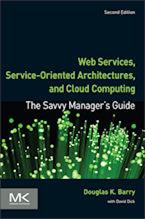Service-Oriented Architecture (SOA) Definition
A service-oriented architecture is essentially a collection of services. These services communicate with each other. The communication can involve either simple data passing or it could involve two or more services coordinating some activity. Some means of connecting services to each other is needed.
Service-oriented architectures are not a new thing. The first service-oriented architecture for many people in the past was with the use DCOM or Object Request Brokers (ORBs) based on the CORBA specification. For more on DCOM and CORBA, see Prior Service-Oriented Architectures.
Services
If a service-oriented architecture is to be effective, we need a clear understanding of the term service. A service is a function that is well-defined, self-contained, and does not depend on the context or state of other services. See Service.
Connections
The technology of Web Services is the most likely connection technology of service-oriented architectures. The following figure illustrates a basic service-oriented architecture. It shows a service consumer at the right sending a service request message to a service provider at the left. The service provider returns a response message to the service consumer. The request and subsequent response connections are defined in some way that is understandable to both the service consumer and service provider. How those connections are defined is explained in Web Services Explained. A service provider can also be a service consumer.

Context for Service-Oriented Architecture (SOA) Definition
Related Articles for Service-Oriented Architecture (SOA) Definition
Author
Douglas K Barry
Principal
You may use this material for your work or classes. Reprint Policy. Be sure to check the menu at the left for other articles available on this site.
The Savvy Manager's Guide
Douglas K Barry is also the author of a book that explains Web Services, service-oriented architecture, and Cloud Computing in an easy-to-understand, non-technical manner.
Web Services, Service-Oriented Architectures, and Cloud Computing: The Savvy Manager's Guide (Second Edition)
by Douglas K Barry with David Dick
This is a guide for the savvy manager who wants to capitalize on the wave of change that is occurring with Web Services, service-oriented architecture, and—more recently—Cloud Computing. The changes wrought by these technologies will require both a basic grasp of the technologies and an effective way to deal with how these changes will affect the people who build and use the systems in our organizations. This book covers both issues. Managers at all levels of all organizations must be aware of both the changes that we are now seeing and ways to deal with issues created by those changes.

